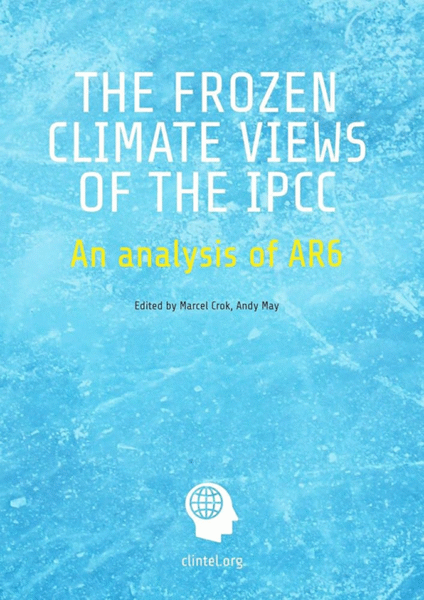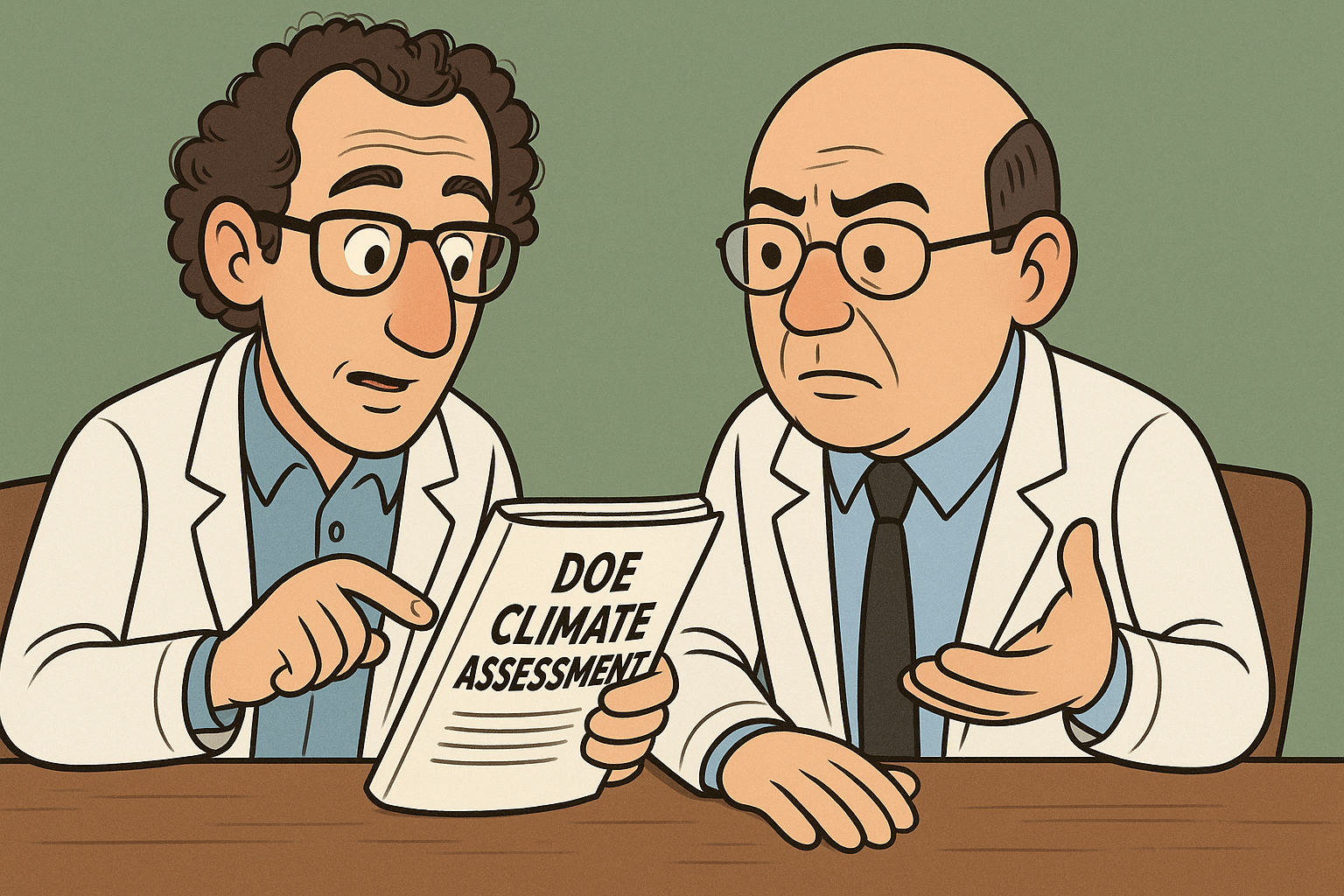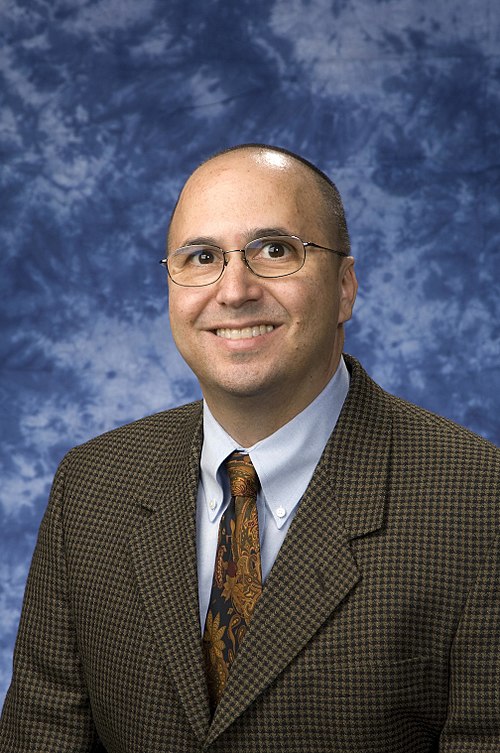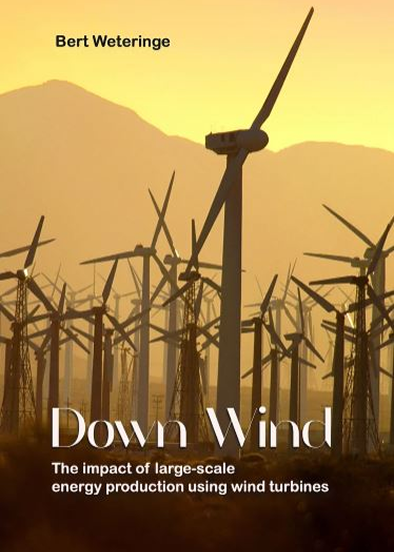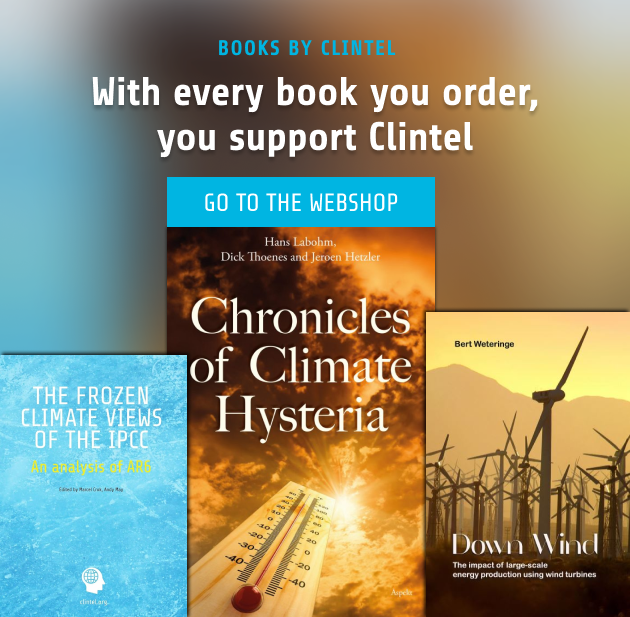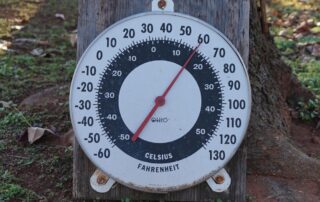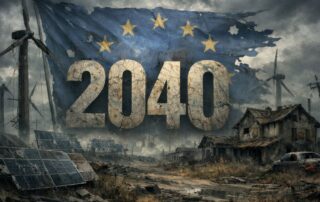DOE Climate Assessment Report: Feedback
A month has passed since the DOE climate assessment report was published. It’s time to reflect on what we might learn from the responses to this Report. Of particular relevance is the report that was issued earlier today, led by Andrew Dessler.
Public comments
The public comment portal for the DOE Report was open for 30 days, and closes on Sept 2 (today). So far there are >2300 comments submitted, with several hundred currently visible on the Federal Register site. The comments are being scrubbed for obscenities, etc. I tried reading through the comments, the portal is awkward (each comment has to be clicked on separately, unlike this blog post). Most of the comments that I’ve looked at are non-substantive cheerleading, attacks or general posturing. It will take time to go through all of these to separate an expected small amount of wheat from the large amount of chaff.
Carbon Brief
One of the early criticisms was that the DOE Report “mis-cited” a paper by Zeke Hausfather by reproducing a diagram from one of his papers, while failing to mention some of the broader points made in his paper (sorry Zeke, that’s not how it works).
This led to Carbon Brief emailing all of the authors cited in the report (plus ~100 other scientists) asking whether the Report uses their work to make misleading or false statements. They received 100 comments from 56 scientists (one scientist contributed about 1/3 of the comments on less than 2 pages of text). The published comments [link] were formatted in a useful way, sorted by chapter/page number and in a single file that is searchable. Several of the comments were useful (including references we hadn’t considered), and worth considering in a revised report. There were many comments on global greening and solar variations. Nearly all the comments were labeled as “misleading”; the factual errors mostly related to misspelling of an author’s name or other mis-citation of a reference.
While I am not in favor of having the media mediate this, and Carbon Brief is arguably far from objective, I appreciate the effort that CB made on compiling this and the effort that individual scientists made to respond.
AMS statement
The American Meteorological Society (AMS) has issued a statement Five foundational flaws in the Department of Energy’s 2025 climate report. This statement has been adopted by the Executive Committee of the AMS Council, I assume this was also written by this Committee. Here is the membership of the Executive Committee [link]. If you cannot recognize any of these names as climate scientists, you would be correct. The statement starts with:
“Here we identify five foundational flaws in the Department of Energy’s (DoE’s) 2025 Climate Synthesis reports. Each of these flaws, alone, places the report at odds with scientific principles and practices. “
Here are the five “flaws”:
- Lack of breadth across scientific fields
- Lack of depth within scientific fields and specific topics
- The DoE Report is based on an unrepresentative group of subject matter experts
- TheDoE Report selectively emphasizes a small set of unrepresentative findings, particularly those that might appear beneficial on superficial examination.
- The DoE Report extrapolates from a limited subset of findings to reach conclusions that do not follow from comprehensive consideration of the scientific evidence.
These “flaws” and allegations of lack of representativeness are political considerations, not scientific principles or practices. Ironically, the following statements are made in alleged support of their points, when in fact these statements emphasize the need for something like the DOE Report:
“To be credible, scientific assessments must include authors who reflect the full range of defensible views among the subject matter experts within every specific area of science that is included in the assessment.”
“Unusual perspectives and disagreement are important within the scientific process because they can generate alternative plausible explanations; identify needs for additional inquiry; or challenge the thinking of the larger community of subject matter experts.”
The Statement concludes with the following:
“Five conclusions are robust when accounting comprehensively for the scientific evidence. They have been consistently reaffirmed by independent subject matter experts and independent scientific institutions worldwide. Decades of intensive research on climate change demonstrate that:
- Climate is changing, and the rate and magnitude of change are unusual in human experience.
- People are the primary cause of modern climate change, mostly through burning fossil fuels.
- Climate change is harmful to humanity, and the threats to people and all life are increasing.
- A wide range of response options is available that can reduce the dangers of climate change.
- Those who study the scientific evidence overwhelmingly agree.”
Oops, they better go back and read the DOE Report.
Besides being a pathetic statement and inappropriate for a professional society, the AMS Executive Committee has done a huge disservice to its membership with this Statement, apart from lack of representativeness of the membership. Back when I first joined the AMS circa 1990, ‘atmospheric science policy’ was about working to preserve NOAA’s budget and the larger research funding for atmospheric sciences – an issue of concern for AMS members as well as the broader public. These days, ‘atmospheric science policy’ is about climate activism and consensus enforcement. The AMS seems to be declaring war on the Trump administration – does the AMS really want to see NOAA’s budget and the atmospheric research budget get cut (more than is already on the table)? Maybe the AMS should try working with the Trump administration, not against it. And this is not to mention the fact that the AMS publishes some of the premier journals in atmospheric and climate science; hard not to expect editorial bias when the Society leadership is making such statements.
Andrew Dressler – source: commons.wikimedia.org
Dessler and Kopp et al. .
While we’ve seen a lot of whining and posturing from climate scientists and professional societies, there has been very little in the way of actual serious and constructive criticism of the DOE Report from the scientific community (with the exception of Carbon Brief; maybe there is something useful buried in the public comments).
Enter the Dessler and Kopp et al. report, with the et al. including contributions from 85 scientists
This is a comprehensive 439 page report that is directly targeted at rebutting the DOE Report, that was prepared in 30 days (sort of weakens the argument that the DOE report was written too quickly, ha ha). The Dessler et al. report also suffers from the same “flaws” identified by the AMS Statement (ha ha).
Before getting into specifics of the Dessler Report, a big bravo and kudos to Dessler et al., who are actually behaving like scientists with their rebuttal to the DOE report. This is exactly the kind of response and dialogue that we hoped the DOE Report would stimulate. (update: in his media interviews, Dessler is sounding pretty unhinged, at this point he risks undoing the “good” from this report).
I have skimmed the entire report (I’m a very fast reader), and paid closer attention to some of the sections related to text that I wrote. The report is organized in terms of the chapters and sections of the DOE Report, essentially providing a review of the DOE Report and suggested changes. The report is lightly edited and loosely coordinated, this is mainly a compilation (with some organization) of contributions from individual scientists. The quality of the report is very heterogeneous across the different sections. Some contributions are quite good. Others are oblique and don’t directly address what was written in the DOE Report. Other comments merely reiterate the “party line,” ignoring our criticisms of the same “party line.”
Bottom line: interesting report, laudable effort. We will be going through this report in much more detail. But in my initial assessment, the Dessler et al. report didn’t land any strong punches on the DOE Report, and I wouldn’t change any of the conclusions in the DOE Report in response. The combination of the DOE and Dessler report highlight areas of disagreement among climate scientists, and illustrates how weighting of different classes of evidence, addressing different topics, and different logical frameworks for linking evidence can lead to different conclusions. The existence of this kind of disagreement is essential information for policy makers, which hitherto has been hidden under the banner of “consensus” enforcement.
Status of the CWG
Owing to a lawsuit that has been filed against the DOE by the Environmental Defense and Union of Concerned Scientists, activities of the Climate Working Group are currently on hold. Personally, I’m collecting the substantive comments for future use.
Judith Curry – source: https://www.freedom-research.org/
JC reflections
In the climate science debate, there are two different mindsets:
- Insisting that you are right (consensus enforcement, and all that)
- Trying to get it right (the scientific process, and all that)
The Climate Working Group as a whole, and the individual scientists (if I can speak for them here), are staunchly in the ‘trying to get it right’ mindset, which is unfortunately the minority mindset.
By bringing forth a less alarming minority perspective that is trying to get it right in a politically favorable environment, the combined efforts of the CWG and the Dessler et al. response present the promise of a genuinely open debate on climate change issue, with more honest and useful assessments that can better guide both climate science and policy.
Specific comments on the Dessler, Kopp et al. report
This section will continue to be expanded upon and edited over the next few days
Global greening (section 2.1). This section elicited a large number of comments from the DOE internal review and Carbon Brief as well as the Dessler et al. report. This is EXCELLENT, since the important topic of global greening has received very little attention in climate assessment reports. The Dessler Report text on section 2.1 is 27 pages long. It claims that some of the DOE statements are misleading or that they imply something that they don’t. While there is much interesting text in this section of the Dessler report and maybe the DOE Report should add some more references, it is clear that none of the statements made in the DOE Report are incorrect, and that the main conclusion “Elevated concentrations of CO2 directly enhance plant growth, globally contributing to “greening” the planet and increasing agricultural productivity” is supported.
Sea level rise (chapter 7). The Dessler, Kopp et al. report objects to the statement “U.S. tide gauge measurements in aggregate show no obvious acceleration in sea level rise beyond the historical average rate.” The Dessler report spends 20 pages trying to convince that sea level rise is accelerating, and that this is evident in the tide gauge measurements. Fortuitously, there is a new paper hot off the press: Global Perspective on Local Sea Level Changes. Key conclusion: “Statistical tests were run on all selected datasets, taking acceleration of sea level rise as a hypothesis. In both datasets, approximately 95% of the suitable locations show no statistically significant acceleration of the rate of sea level rise.” So yes, some additions to DOE chapter 7 on sea level rise acceleration are warranted, but not in the direction of the Dessler et al. report. The claim the data on VLM in Table 7.1 is unsupported; they neglected to read the metadata.
Model predictions of corn belt temperatures (section 5.8) A defense of climate models is presented by claiming that they do a good job of simulating global average temperatures. They explain why climate models have difficulty simulating regional temperatures, and point out the need for a large ensemble. They imply we “cherry picked” a region where the models do worst. Well yes, this is an economically important region where the models perform poorly.
Solar variability (section 8.3.1). There were substantial comments on solar variability submitted to the Carbon Brief, and essentially the same comments were submitted to Dessler et al. (20 pages of text). I carefully went through the Carbon Brief comments, and drafted an edited version of the solar section that deletes several sentences and adds some additional references. I also checked in with members of the ACRIM science team, they continue to support high solar variability. Hence, the high-level conclusion in the DOE Report “Moreover, solar activity’s contribution to the late 20th century warming might be underestimated” is justified.
Hurricanes (section 6.2). Dessler et al. devote 12 pages to the issue of hurricanes. Shortly after the DOE Report was published, I engaged with tropical meteorology experts on the Tropical ListServ to discuss section 6.2 (some of these authored the response here). Some were concerned that theory and models were ignored, and possible future risks weren’t mentioned. In response, I drafted a new subsection entitled “Factors contributing to US economic losses”, which addresses the following issues: rates of intensification, track speed, horizontal size, storm surge, rainfall and tornadoes. The combination of high amplitude natural variability plus short and inhomogeneous data sets imply low confidence in the detection and attribution of any trends. Models and theory are interesting for speculating about future possibilities (something that is not addressed in the DOE Report), but as for interpreting the past, show me the data.
Tornadoes (section 6.5). This section is an example of a useful contribution. These same points, related to more tornadoes earlier in the season and moving further east, were made on the Tropical ListServ, and I had already drafted a new paragraph to account for this.
Urbanization (section 3.3). This section claims to refute our concerns about inadequate treatment of the urban heat island effect by using the Berkeley Earth data set to compare land/ocean temperatures and the ERA5 level 500 m above the surface, and population density map. Very weak tea.
Declining planetary albedo (section 8.4). This is an example where they completely miss the point, focusing on the record temperatures of 2023, 2024 and then arguing that equilibrium climate sensitivity should be 4.5C.
Climate sensitivity (chapter 4). 24 pages of stuff that isn’t useful. This was not written by the climate sensitivity A-team. They claim we have a misleading focus on ECS; we should have focused on TCRE and ZEC. They make much ado about the “pattern effect.” They manage to misrepresent the AR6 and Sherwood et al.
Surface temperature extremes (section 6.3) There is an astonishing result presented by Dessler et al: the Berkeley Earth dataset finds twice as many heat wave days in the Eastern US in the last 20 years as in the 1930s. I’m not sure that I have seen anything published on Berkeley Earth daily temperatures, this should be investigated, something looks very off. They also make the following statement underpinning this section that defies any kind of logic I can understand: “they make the statistically dubious leap that, because the 1930’s extreme temperatures are comparable to today’s temperatures, then climate change cannot be contributing to more extreme heat today.”
Emissions scenarios (section 2.1) Much word salad, but they seem to be defending the implausible extreme 8.5 emissions scenarios.
Billion dollar weather disasters (section 10.2) Much word salad, but they seem to be defending the now discredited NOAA Billion Dollar Disasters dataset
Tropospheric warming (Section 5.3) The best they can do is “it is premature to conclude that models are substantially deficient given the large uncertainties in observational estimates of atmospheric temperature trends”
Vertical temperature profile mismatch (Section 5.4). They essentially support the DOE Report that describes this mismatch, further emphasizing “The relative contributions of observational uncertainty, internal variability, errors in the prescribed model forcing, and model biases to the model-observation discrepancies are likewise unresolved.”
Roger Pielke Jr.
Pielke Jr’s analysis
Good substack article from Roger Pielke Jr. Excerpts:
Dessler, who calls the DOE report “bullshit,” pulls no punches in asserting that there is absolutely nothing that is scientifically accurate in the DOE CWG report:
To be clear, the DOE report raises no “interesting questions” overlooked by the scientific community, highlights no ignored research gaps, and brings no fresh perspective. Instead, it’s a rats’ nest of bad arguments.
To the extent that there are legitimate scientific arguments in there, those have already been rejected by the scientific community. But scientific arguments are rare in the DOE report; rather, it’s mainly selective misquoting of the scientific literature (cherry picking), omission of contrary results from the scientific literature, and simple errors due to a lack of understanding of the science.
This framing has been adopted by the media, as you can see in the headlines below characterizing the critique upon its release this morning.
I took a look at the DK25 report in my areas of expertise, as I did with the DOE CWG, and I found numerous statements that were simply false — among them that World Weather Attribution was not created with litigation in mind, that NOAA”s “billion dollar disasters” (RIP) tabulation was scientifically valid, that SRES had 6 not 40 scenarios, and that RCP8.5 has not been the most commonly used scenario in research and assessment. DK25 ignored all of our research that was accurately cited by DOE CWG.
DK25 also includes a bizarre claim regarding the detection of changes in extreme weather events:²
“the absence of statistically significant trends in the historical records does not mean that changes are not occurring”³
Actually, that is exactly what the absence of detection means — don’t take it from me, take it from the IPCC, which defines a change in climate as follows:
A change in the state of the climate that can be identified (e.g., by using statistical tests) by changes in the mean and/or the variability of its properties and that persists for an extended period, typically decades or longer.
This line of argument seems not to be against the DOE CWG report — which relies heavily on the IPCC — but against the IPCC’s framework for detection and attribution, which is already under siege for not producing strong indications of change in most measures of weather extremes.
Extreme event attribution, RCP8.5, and “billion dollar disasters” are not the hills I’d choose to die on, but apparently the authors of DK25 were so intent in asserting that every claim of DOE CWG is false, that they could not admit the many places where DOE CWG got things right.
My view is that there are stronger and weaker claims in both DOE CWG and DK25. In my areas of expertise — notably scenarios and extreme weather — the DOE CWG is pretty strong (but could be better) and DK25 is pretty weak. In other areas, the balance will surely be different. But the Manichean nature of climate debates is that no territory can be given to the enemy.
Dessler makes very clear that he believes that this exercise is all about politics:
If you don’t follow climate policy closely, you may not know that the Trump administration is launching an effort to overturn one of the most fundamental pillars of American climate policy: the scientific finding that carbon dioxide endangers human health and welfare (the so-called “Endangerment Finding”). If successful, this move could unravel virtually every U.S. climate regulation on the books, from car emissions standards to power plant rules.
To support this effort, the Department of Energy hand-selected five climate contrarians who dispute mainstream science to write a report, which ended up saying exactly what you would expect it to say: climate science is too uncertain to justify policies to limit warming. . .
The history of cigarettes shows that such tactics can delay policy action for decades, but they cannot indefinitely postpone scientific reality from emerging. The only real question is how much damage the delay causes.
The assumption here is that if you find some degree of merit in the DOE CWG then climate policy is doomed and if you instead side with DK25, then carbon dioxide regulation is on its way. Viewed from this perspective, scientific assessments are ”tactics” to be mobilized to support political action or delay.
Such a perspective turns scientific assessment into partisan politics. Scientific integrity inevitably suffers.
more news
My Twenty Years of Watching the Thermometer—and the Narrative
As Watts Up With That? approaches its twentieth year, Anthony Watts reflects on nearly two decades of observing thermometers and climate discourse.
Think tank IREF: ‘Against All Rationality, the EU Persists in its Net-Zero Delusion’
The European Commission has approved a new step towards its 2050 ‘net-zero’ objective, targeting a 90% reduction in net greenhouse gas emissions relative to 1990 levels by 2040. But a recent report by the French think tank IREF (Institut de Recherches Économiques et Fiscales) delivers a sobering reality check.
The Misinformation Inquisition: How Censorship Shields Approved Narratives from Scrutiny
Tilak Doshi cautions that modern censorship, justified in the name of combating misinformation, increasingly functions as a tool to protect dominant narratives from challenge.
